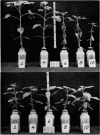Abstract
Helianthus annuus L., the common cultivated sunflower, and Helianthus bolanderi Gray subspecies exilis Heiser, a form endemic on serpentine soils, were grown in culture solutions with widely varying Mg levels. For comparable development, H. bolanderi exilis required higher levels of Mg in the solution than H. annuus, both in the range of visual deficiency symptoms and in higher ranges.
With 0.5 mm Ca in the solutions, H. annuus reached a plateau in yield in the range of 0.25 to 2.0 mm Mg in the solution, then declined in weight markedly as Mg was increased further. This decline was probably caused by the marked “luxury” consumption of Mg. Conversely, H. bolanderi exilis increased steadily in yield as Mg was raised up to 10 mm and tolerated up to 50 mm Mg in the solution with only about 30% decline in yield. The increasing yield of H. bolanderi exilis in solutions of increasing Mg level is attributable to the steadily rising Mg content of the plants. A high level of external Mg is apparently needed to bring internal Mg to the sufficiency range. This characteristic of the species also serves to obviate luxury consumption of Mg, thus contributing to its tolerance of very high external levels of this ion.
Full text
PDF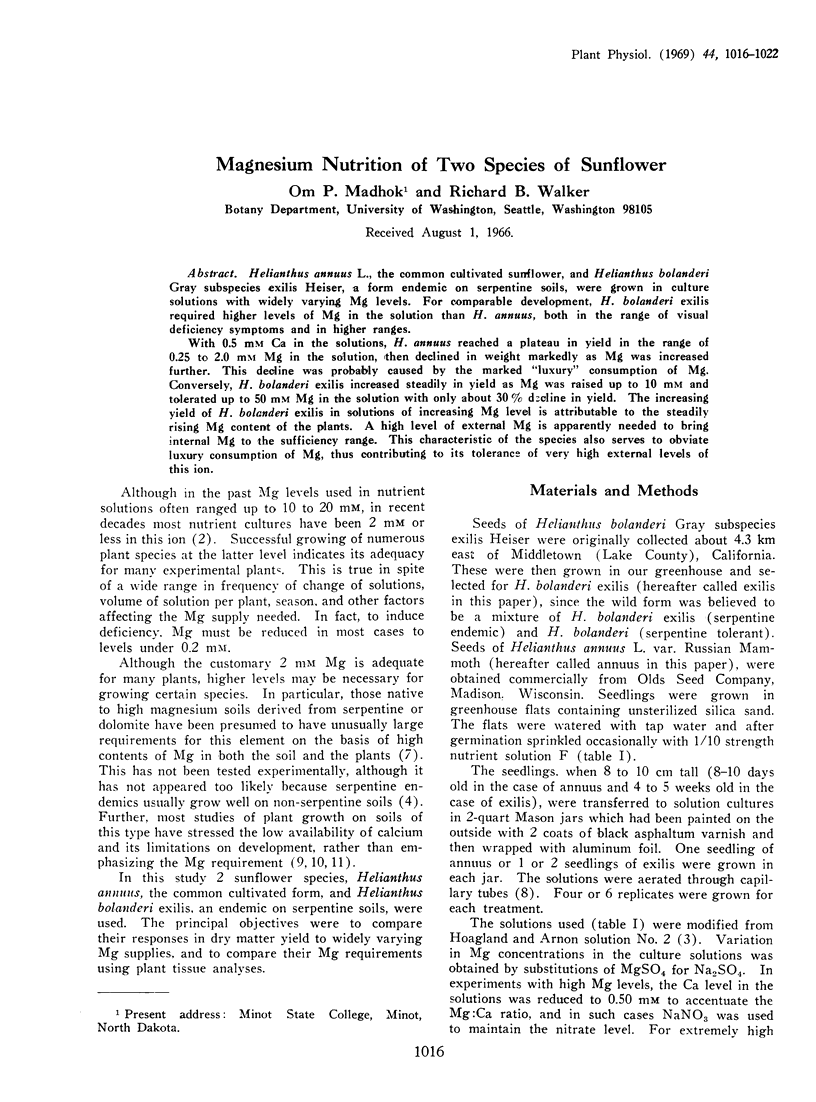
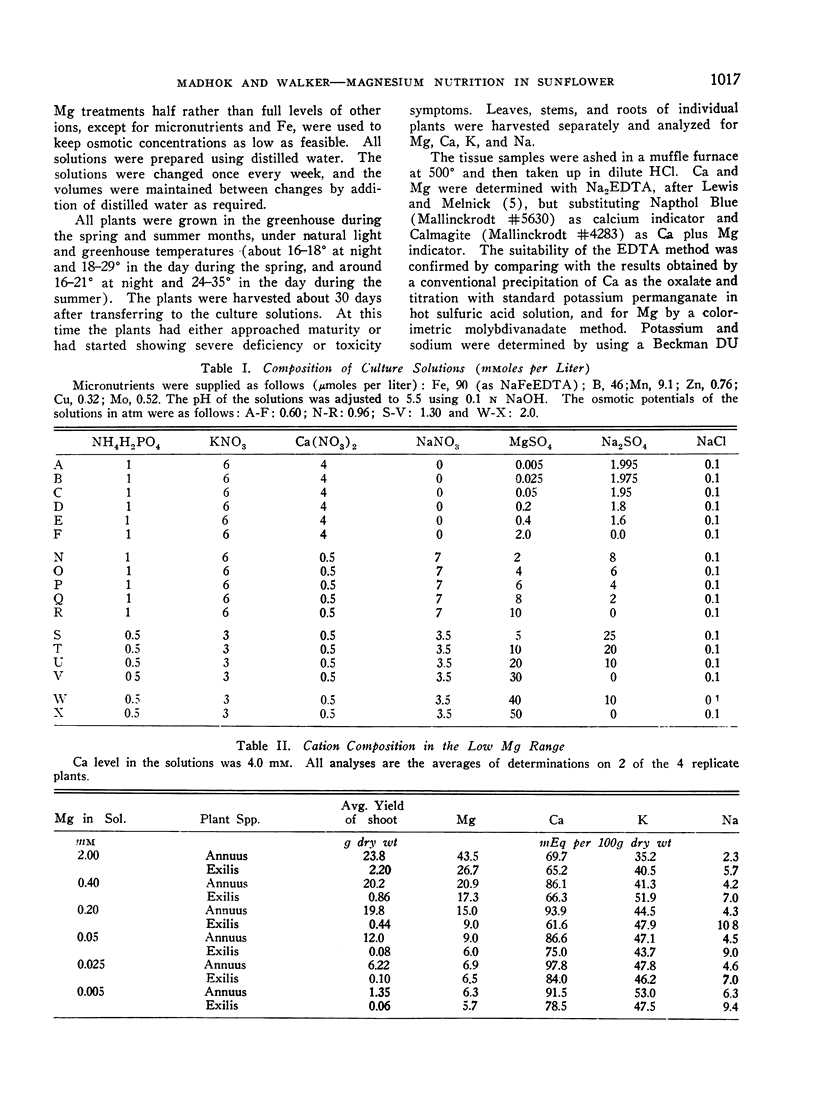
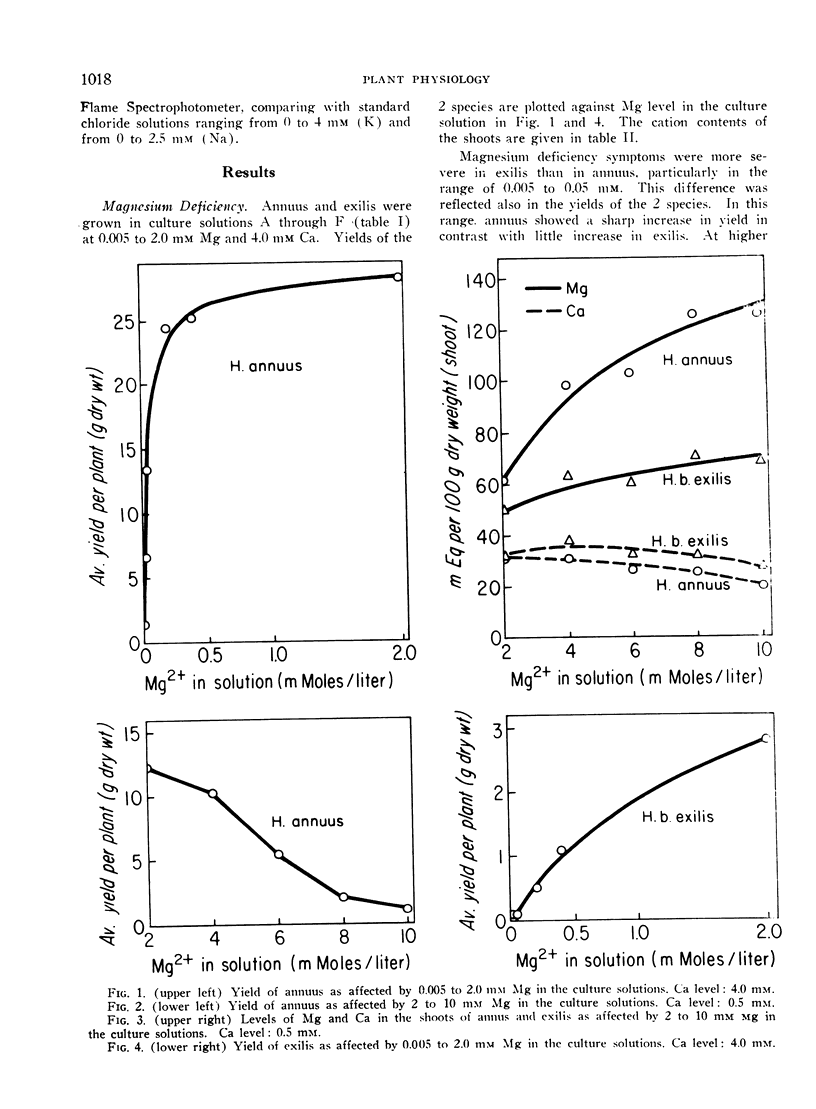
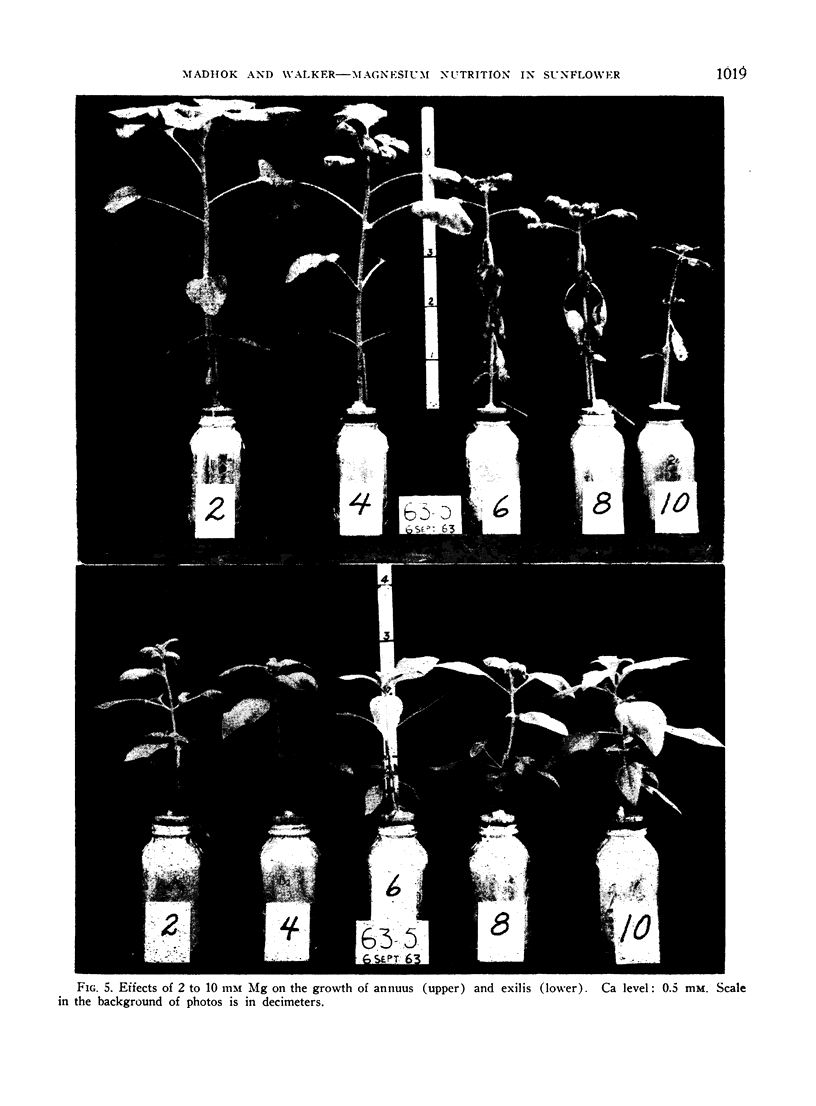
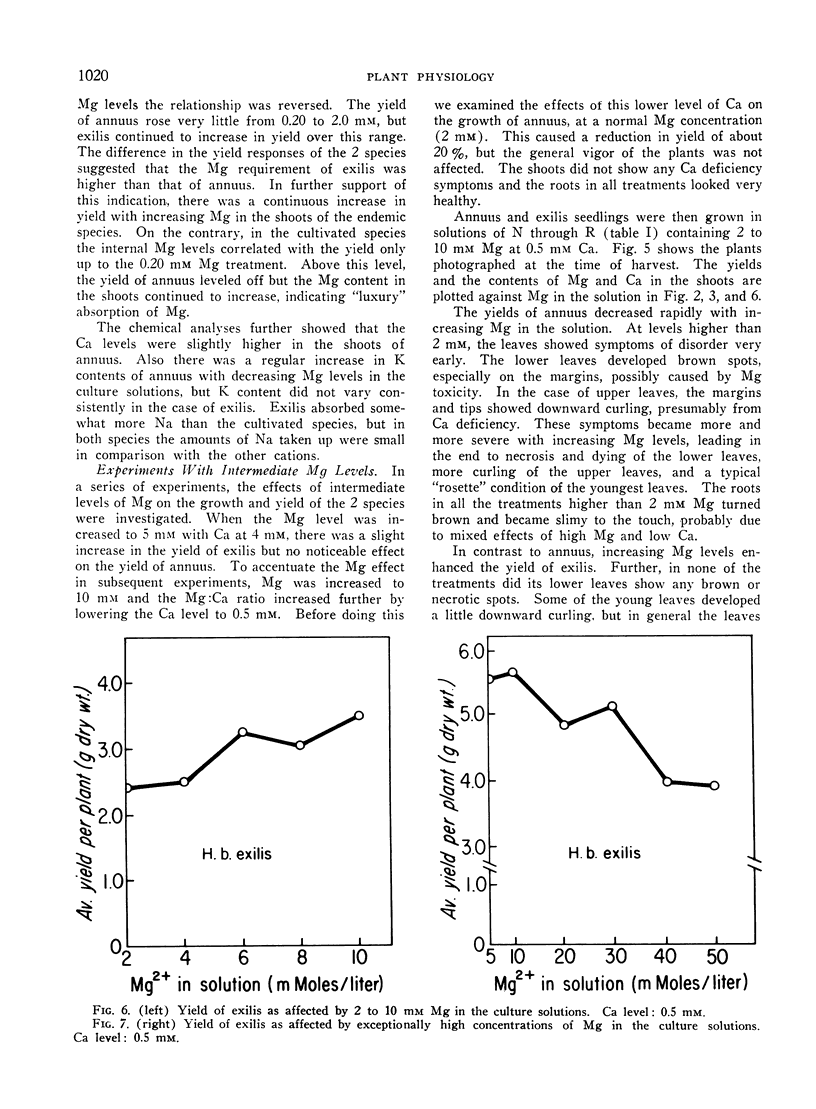
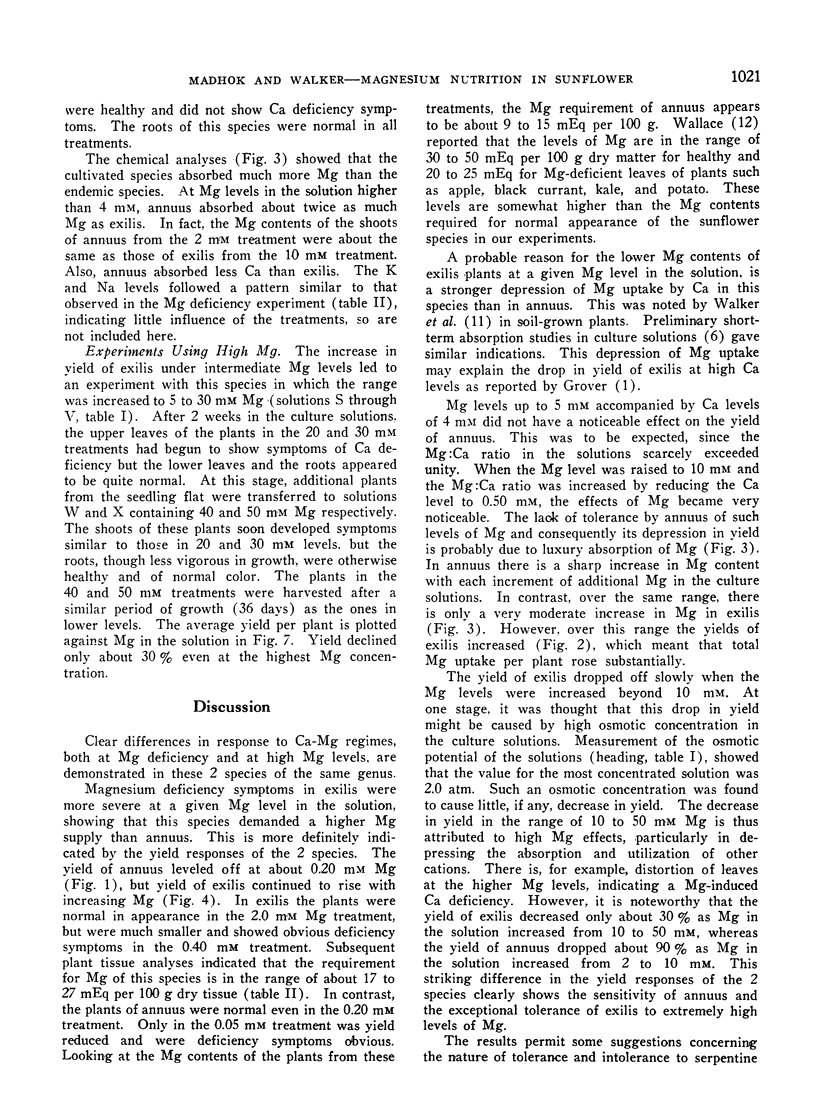
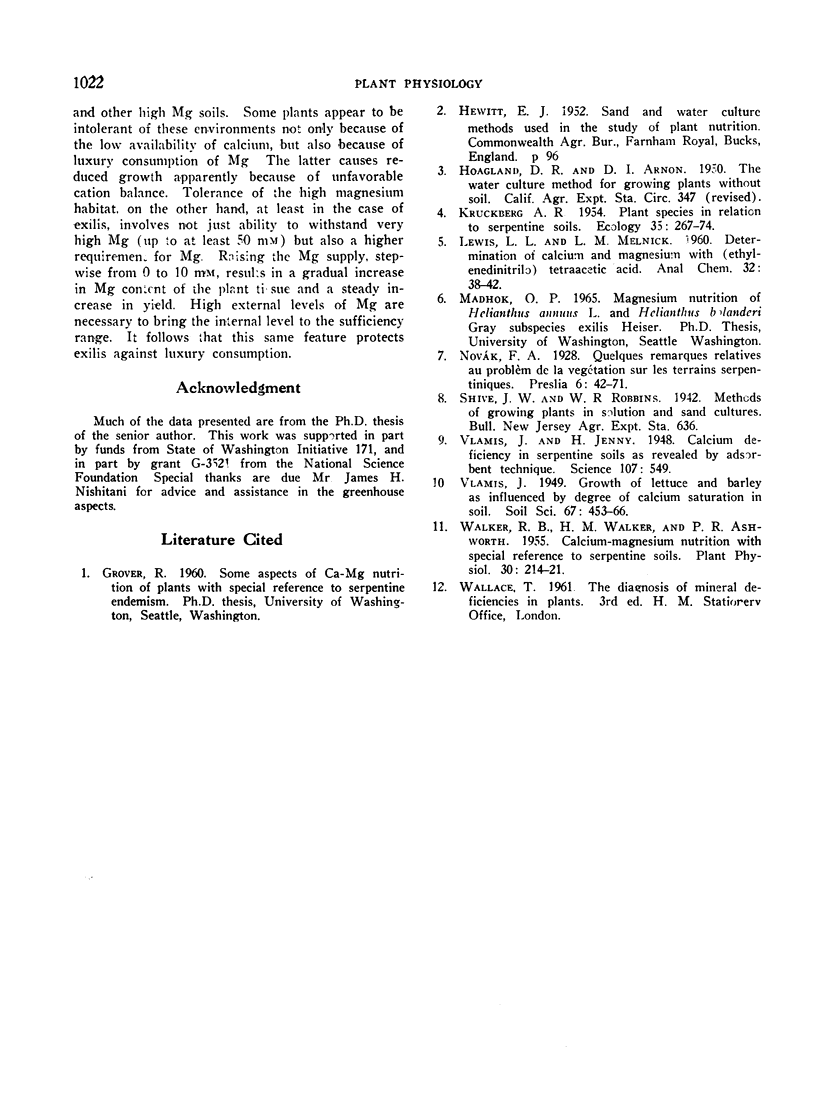
Images in this article
Selected References
These references are in PubMed. This may not be the complete list of references from this article.
- Vlamis J., Jenny H. Calcium Deficiency in Serpentine Soils as Revealed by Adsorbent Technique. Science. 1948 May 21;107(2786):549–549. doi: 10.1126/science.107.2786.549. [DOI] [PubMed] [Google Scholar]



